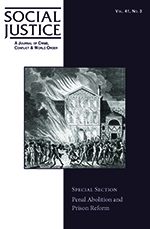Description
Staff Use of Force in U.S. Confinement Settings: Lawful Control Tactics Versus Corporal Punishment
In his commentary, Steve J. Martin examines the use of force in U.S. confinement settings to distinguish lawful control tactics from corporal punishment, which is illegal in U.S. corrections. The essay focuses on an insidious pattern or practice of unlawful staff use of force that is cloaked with, or protected by, an air of legitimacy in which ostensibly lawful applications of physical force mask the intentional infliction of punishment, retaliation, or reprisal on prisoners. Such de facto corporal punishment is often used against mentally ill offenders whose behavior, as viewed by inadequately trained officers, is to be punished rather than treated. This pattern is reinforced by the wide range of high-tech, non-lethal weaponry available to correctional personnel, especially with the advent of “super” or “ultra” maximum-security prisons in which to house “super-predators.” According to Martin, demonized super-predators are often the recipients of high-tech weaponry, and the rhetoric about them provides an ideological justification for unprecedented levels of force, even though hard-core troublemakers requiring maximum-security confinement are hardly a new phenomenon in corrections.
maximum-security prisons, corporal punishment, torture, mentally ill offenders
Citation: Social Justice Vol. 33, No. 4 (2006): 182-190

